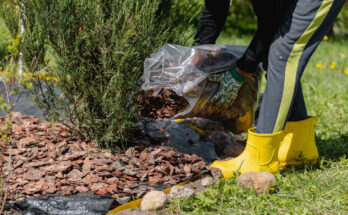Fill Bare Spots In Your Garden With A Fast-Growing Plant You’ll Rarely Have To Water
Livening up your garden can sometimes seem like a daunting task, especially at the start of the season. Whether you’re struggling with a small garden you want to look bigger, or you’re puzzled over your vegetable garden spacing, there are a few solutions to fill bare spots in your garden and achieve your desired outcome. For example, if you’re looking for a fast-growing plant to add to your garden or a drought-resistant plant that thrives without much water, how about the best of both worlds? Emu bushes (Eremophilia) are the perfect way to fill bare spots in your garden without exerting too much effort to make them flourish.
Emu bushes are native to Australia and get their common name due to the fact that emus eat the plant’s fruits. Emu bushes are also great for pollinator gardens, so you might want to choose them to attract hummingbirds. There are also several different varieties of emu bush to suit your garden needs, including the ‘Blue Bells’ and ‘Valentine’ varieties, which have blue blooms and vibrant hot pink blooms respectively. These plants are often categorized as “accent plants” because of their ability to draw attention in the garden.
Everything you need to know about planting and caring for emu plants
The best way to grow emu bushes is from cuttings, which are readily available at many nurseries and garden centers. As emu bushes need little water, they thrive best in full sun. They also work best when cultivated in USDA hardiness zones 9 through 11, but if you live in a cooler area, they can survive a frost. An emu bush’s watering schedule depends on the time of year and climate in which you live. You might water an emu bush once a week during summer, but only once a month in winter. Ensure that wherever you choose to place an emu bush in your garden, they are planted in well-draining soil.
As for where you should plant them, emu bushes fill in well anywhere in the garden, but some gardeners recommend planting them in groups of three. Like many shrubs, you should also plant emu bushes three to five feet apart to prevent overcrowding. Companion plants that work well with emu bushes include native shrubs, ground covers, and drought-tolerant perennials. Emu bushes are also known to be great container plants, so if you have filled up all the room in your garden, you might want to try putting these vivid blooms on a balcony, porch, or courtyard.



